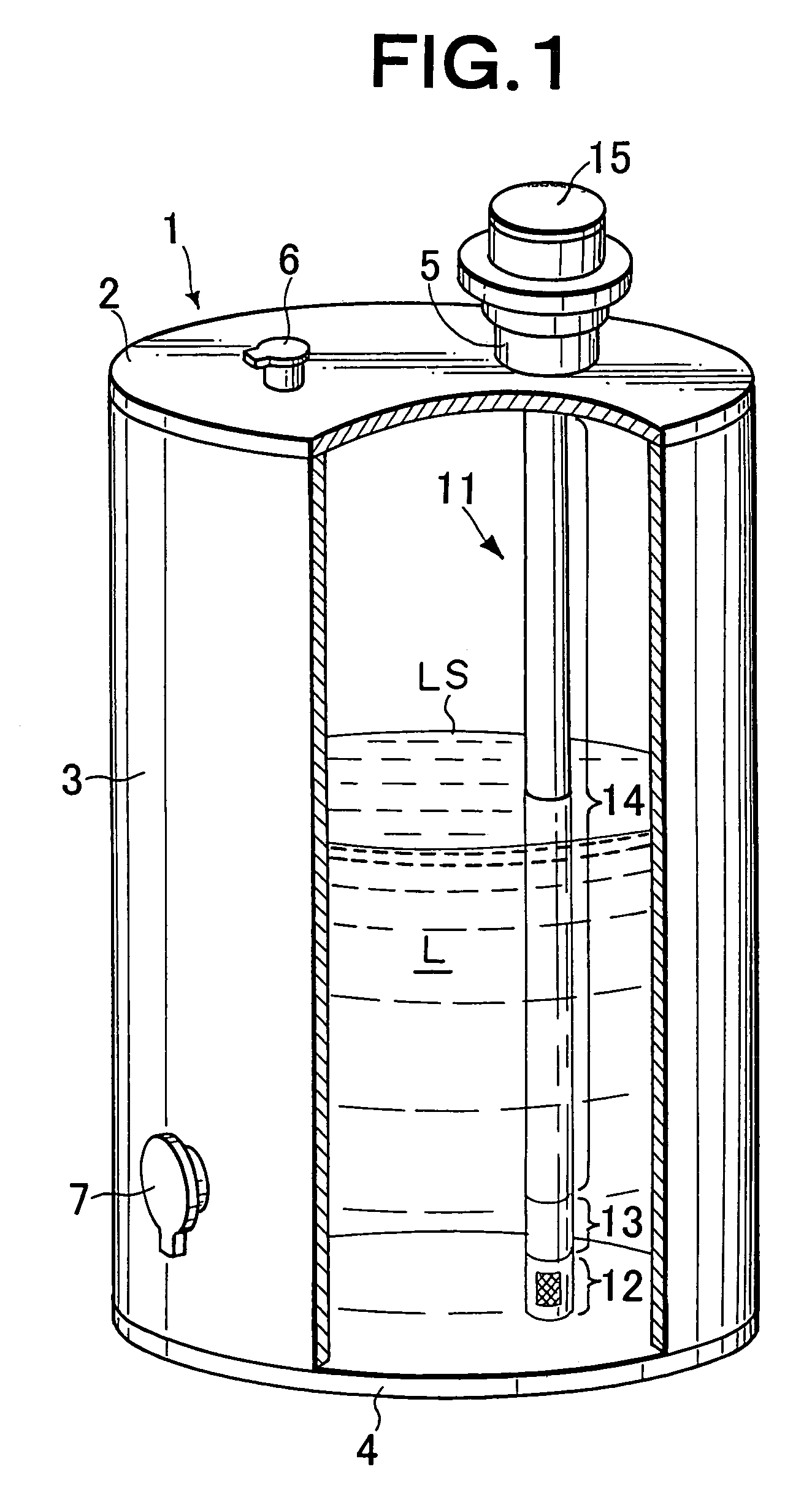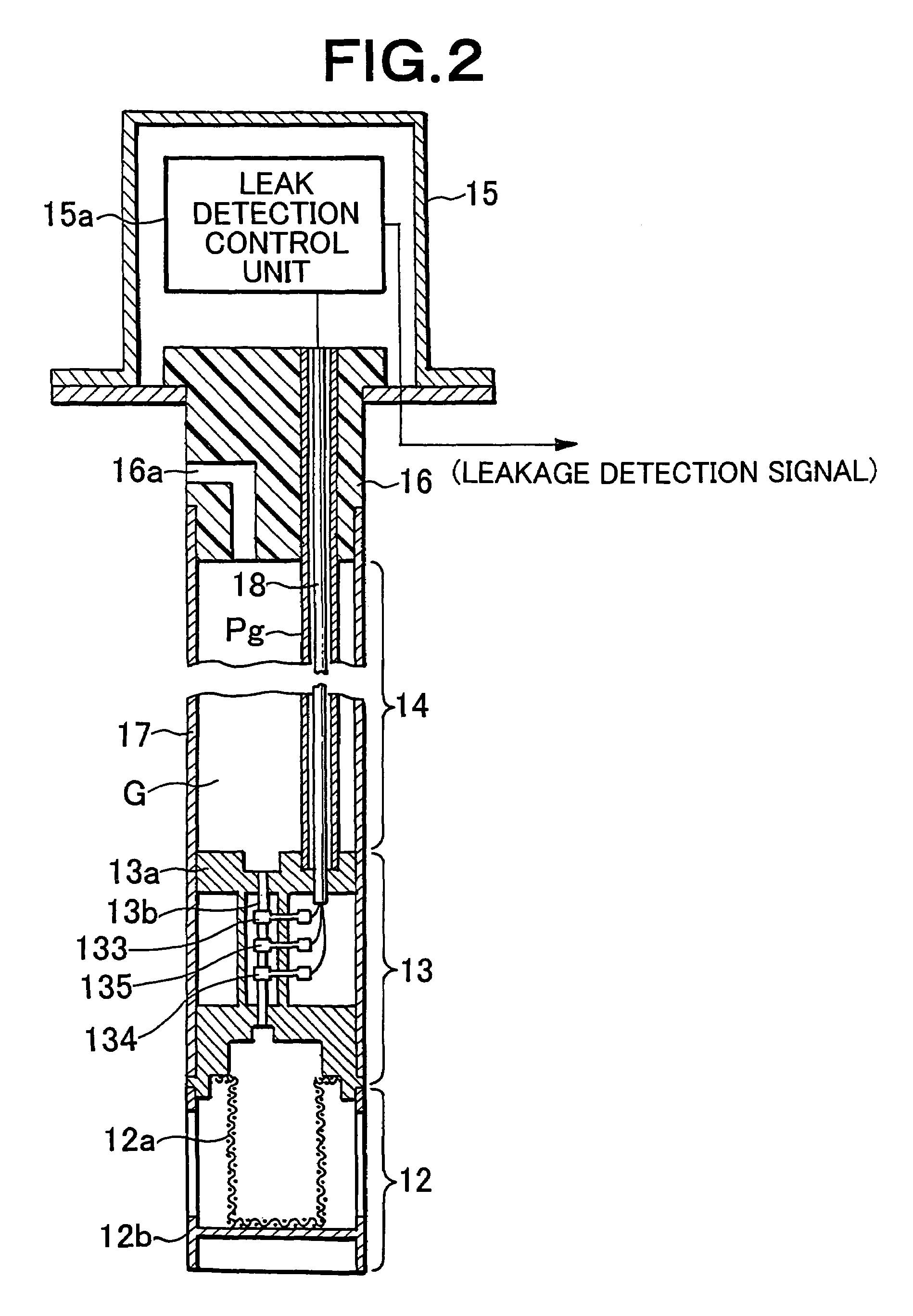Leak detector of liquid in tank
a leak detector and tank technology, applied in fluid tightness measurement, instruments, machines/engines, etc., can solve the problems of increasing the error in the flow rate measurement value, the leakage of liquid in the tank from the tank, and the cracks of the tank, so as to reduce power consumption, improve accuracy, and accurately detect the effect of minute leakag
- Summary
- Abstract
- Description
- Claims
- Application Information
AI Technical Summary
Benefits of technology
Problems solved by technology
Method used
Image
Examples
Embodiment Construction
[0078]Embodiment of the present invention will be described below with reference to the accompanying drawings.
[0079]FIG. 1 is a partially broken view for explaining an embodiment of a leak detector of liquid in a tank according to the present invention, and FIG. 2 is a partially omitted cross-sectional view of the leak detector according to the present embodiment.
[0080]A tank 1 has a top panel 2 in which a measurement port 5 and a liquid inlet 6 used when liquid is introduced into the tank are formed, a side panel 3 in which a liquid supply port 7 used when liquid in the tank is supplied to the outside is formed, and a bottom panel 4. As shown in FIG. 1, liquid L (flammable liquid of mixed composition containing many organic compounds such as gasoline, diesel oil, kerosene, or the like) is contained in the tank 1. LS denotes a liquid surface.
[0081]A portion of a leak detector 11 is inserted into the tank 1 through the measurement port 5 formed in the top panel 2 of the tank 1, and t...
PUM
 Login to View More
Login to View More Abstract
Description
Claims
Application Information
 Login to View More
Login to View More - R&D
- Intellectual Property
- Life Sciences
- Materials
- Tech Scout
- Unparalleled Data Quality
- Higher Quality Content
- 60% Fewer Hallucinations
Browse by: Latest US Patents, China's latest patents, Technical Efficacy Thesaurus, Application Domain, Technology Topic, Popular Technical Reports.
© 2025 PatSnap. All rights reserved.Legal|Privacy policy|Modern Slavery Act Transparency Statement|Sitemap|About US| Contact US: help@patsnap.com



